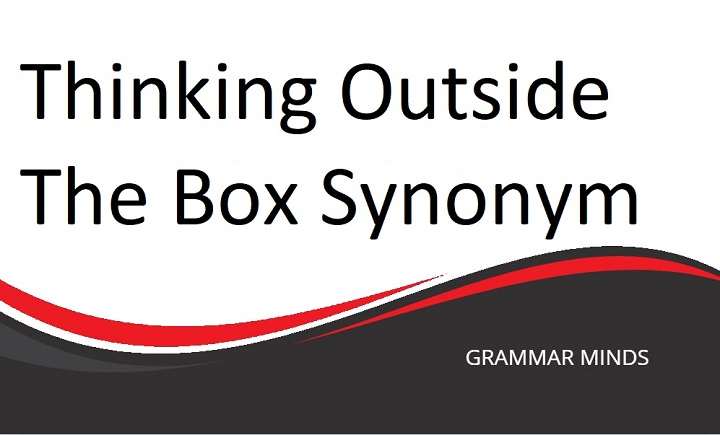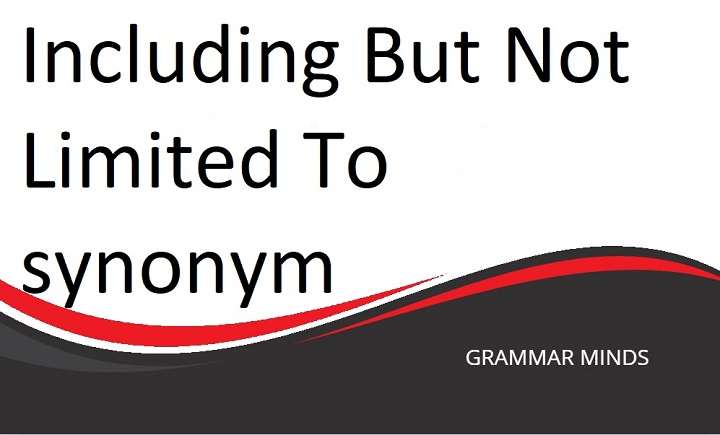In today’s dynamic and competitive world, creativity is often the key to success. We frequently hear the phrase “thinking outside the box” to encourage unconventional ideas and solutions. But have you found yourself using the phrase “thinking outside the box” repeatedly? Do you want to refresh your vocabulary and avoid sounding monotonous in both professional and personal conversations?
Don’t worry! We’ve compiled a comprehensive list of alternative phrases that you can use to sound more varied and dynamic. Whether you’re writing an email or engaging in casual conversation, these phrases will help you stand out with fresh language and new perspectives.
Other Ways to Say “Thinking Outside the Box”
Innovative Thinking
A strong alternative to “thinking outside the box,” this phrase highlights the power of creativity and originality. It’s perfect for professional settings where innovation is key.
Blue Sky Thinking
This playful yet professional phrase evokes a sense of limitless possibilities. It’s commonly used in brainstorming sessions or strategic planning discussions.
Breaking the Mold
This metaphorical phrase suggests breaking away from traditional methods or habits, making it a great choice in both formal and informal situations.
Unconventional Approach
Ideal for emails or discussions, this phrase brings a sense of uniqueness and originality to your communication, suggesting the use of new, unusual methods to tackle challenges.
Lateral Thinking
A more technical alternative, “lateral thinking” is often used in corporate or academic contexts to describe the process of approaching problems from new angles.
Thinking Differently
A simple yet effective alternative, “thinking differently” is versatile enough to fit into casual conversations as well as professional environments.
Pushing the Boundaries
This phrase is popular in creative industries. It implies not just thinking differently, but actively challenging norms and limitations.
Out-of-the-Box Ideas
While this phrase keeps the essence of “thinking outside the box,” it shifts the focus to the ideas rather than the thought process itself.
Creative Problem-Solving
This straightforward alternative is perfect for formal situations where you want to emphasize a practical, innovative approach to solving issues.
Thinking Beyond Limits
This inspiring phrase can be used in motivational contexts, suggesting an ability to move beyond conventional constraints.
Key Notes
The phrase “thinking outside the box” is grammatically correct and suitable for both formal and informal situations. However, it can sometimes feel a bit basic and overused, especially in professional environments. If you want to freshen up your communication and make a stronger impact, consider using the alternatives listed above.
- You can use “Innovative Thinking” for formal situations, especially in emails or presentations.
- “Blue Sky Thinking” is a great informal alternative for creative brainstorming sessions.
- “Lateral Thinking” is often favored in academic and problem-solving discussions.
Keep reading to discover how to use these phrases in various contexts and real-life examples of how they can be applied.
Innovative Thinking
Usage:
If you’re looking for a more formal and professional way to say “thinking outside the box,” try using “Innovative Thinking.” This alternative emphasizes originality and creativity, making it ideal for environments where innovation is prized, such as in business meetings or project proposals.
Example (in an email):
Dear Sarah,
Thank you for your assistance with the project. Your dedication and hard work are greatly appreciated. Moving forward, I believe innovative thinking will help us streamline the process and meet our deadlines more efficiently.
Best regards,
John
Blue Sky Thinking
Usage:
A more informal alternative to “thinking outside the box” is “Blue Sky Thinking.” This phrase works well in relaxed settings like brainstorming sessions or discussions where there are no constraints or limitations on the ideas being shared.
Example (in conversation):
Hey Mark,
Thanks for coming to the meeting today! I really appreciate your insights. Let’s try some blue sky thinking at our next session to see if we can come up with something groundbreaking.
Catch you later!
Breaking the Mold
Usage:
“Breaking the Mold” suggests a strong departure from tradition. Use this phrase in situations where you’re trying to challenge the status quo or suggest something radically new. It works well in both formal business settings and casual discussions.
Example (in a meeting):
We’ve always followed the same approach for years, but now might be the time to consider breaking the mold if we want to stay competitive.
Unconventional Approach
Usage:
Use “Unconventional Approach” when you want to highlight a non-traditional method of tackling an issue. This phrase is often employed in both formal reports and everyday conversations to indicate a creative or unexpected solution.
Example (in a conversation):
I know we usually stick to the basics, but for this project, I think we need to take an unconventional approach to reach our target audience.
Lateral Thinking
Usage:
“Lateral Thinking” is a more formal and technical way to describe creative problem-solving. It’s often used in academic or corporate environments, particularly when discussing structured approaches to tackling complex issues from multiple angles.
Example (in a presentation):
Our team has been trained in lateral thinking, enabling us to explore diverse solutions that others might overlook.
Thinking Differently
Usage:
This phrase is perfect for everyday conversation or casual professional environments. “Thinking Differently” captures the essence of creativity without sounding too formal or technical, making it versatile across various contexts.
Example (in a discussion):
To solve this problem, we need to start thinking differently and come up with some fresh ideas.
Pushing the Boundaries
Usage:
“Pushing the Boundaries” is commonly used in creative industries, particularly when discussing innovation in art, technology, or design. It implies not just thinking differently but actively challenging and expanding the limits of what’s possible.
Example (in an email):
Dear Anna,
I believe our team has the potential to push the boundaries and create something truly revolutionary in our next campaign.
Best,
David
Out-of-the-Box Ideas
Usage:
This variation on “thinking outside the box” shifts the focus from the thought process to the outcome, emphasizing the creativity of the ideas themselves. It’s ideal for brainstorming sessions or informal discussions.
Example (in a conversation):
Your team always comes up with the most out-of-the-box ideas during our strategy meetings. I can’t wait to hear more!
Creative Problem-Solving
Usage:
“Creative Problem-Solving” is a more practical alternative that emphasizes both the process and the outcome. It’s commonly used in professional environments where you want to highlight your ability to find innovative solutions to challenging problems.
Example (in a report):
Our team’s creative problem-solving skills allowed us to meet the client’s needs in a unique and effective way.
Thinking Beyond Limits
Usage:
This motivational phrase is often used in leadership contexts to encourage bold, innovative thinking that transcends normal boundaries. It works well in both formal speeches and casual discussions about ambition and creativity.
Example (in a motivational speech):
If we want to achieve greatness, we need to start thinking beyond limits and not be confined by what’s been done before.
Is It Correct to Say “Thinking Outside the Box”?
Yes! The phrase “thinking outside the box” is grammatically correct and suitable for both formal and informal settings. It’s a versatile expression that can be used in professional emails, meetings, or casual conversations. That being said, using synonyms like the ones listed above will help you diversify your vocabulary and communicate more effectively in various contexts.
You can also try slight variations of this phrase, like the following:
- Thinking outside the boundaries
- Thinking beyond the ordinary
- Exploring uncharted territory
Also Read
What to Say Instead of “Family Emergency”
In conclusion, while “thinking outside the box” is a perfectly acceptable and grammatically correct phrase, it can sometimes feel overused. The alternative phrases provided in this article will help you communicate more effectively by diversifying your vocabulary. Whether you’re in a formal business setting or a casual conversation with friends, these synonyms will ensure that your language remains fresh, engaging, and impactful.






